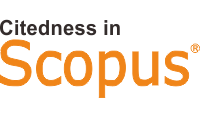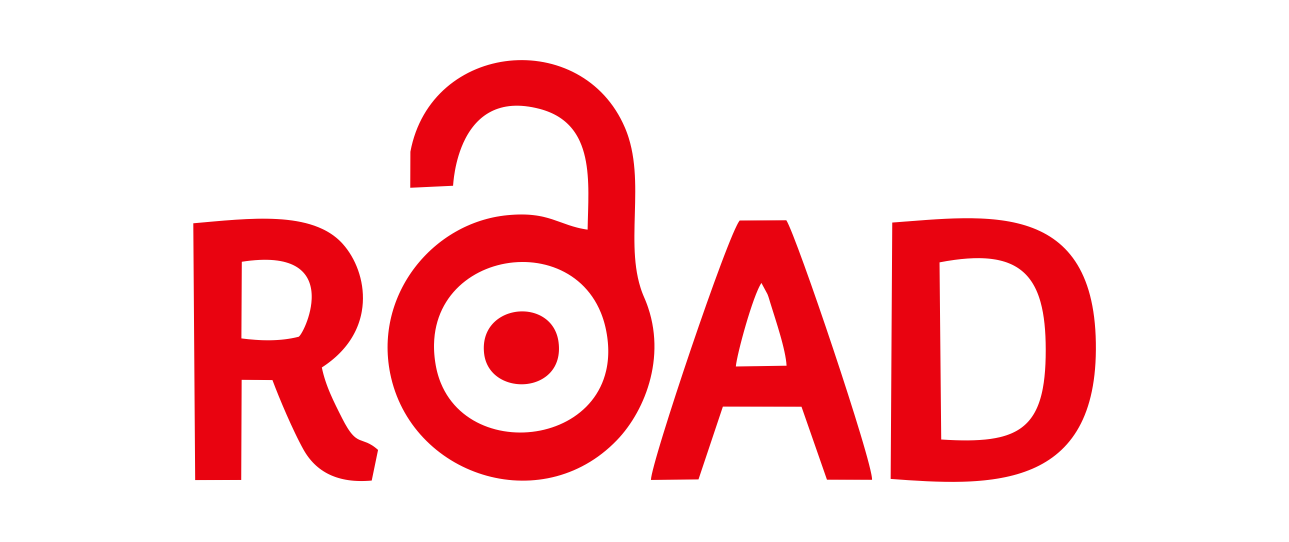The Investigate of Green Open Space Recreation Facilities Based on Homo Urbanicus Theory
DOI:
https://doi.org/10.35313/jtospolban.v4i3.139Keywords:
Homo Urbanicus Theory, Green Open Space, GenderAbstract
This study aims to evaluate visitors' assessments of urban green open spaces based on the Homo Urbanicus theory, encompassing the dimensions of people, opportunity, event, and space. Using data from 178 respondents visiting green open spaces (GOS) in Bandung, the analysis was conducted using Structural Equation Modeling-Partial Least Squares (SEM-PLS). The findings indicate that both male and female visitors generally perceive the provision of primary and supporting facilities in GOS similarly. They equally recognize these facilities as essential without distinguishing between genders. However, concerning comfort, perceptions of primary and supporting facilities differ based on gender. Therefore, park management should design primary and supporting facilities to function generically for both men and women while differentiating comfort elements based on gender-specific preferences.
References
Ahmadpoor, N., & Shahab, S. (2021). Urban form: Realising the value of green space: a planners' perspective on the COVID-19 pandemic. Town Planning Review, 92(1), 49–55. https://doi.org/10.3828/tpr.2020.37
Althoff, T., Sosič, R., Hicks, J. L., King, A. C., Delp, S. L., & Leskovec, J. (2017). Large-scale physical activity data reveal worldwide activity inequality. Nature, 547(7663), 336–339. https://doi.org/10.1038/nature23018
Andrianto, T., Tiafahmi Angestiwi, & Aceng Gima Sugiama. (2023). Evaluation of Urban Green Open Space Asset Utilisation (Study of Tourism Perception and Preference in Bandung City Parks). BARISTA: Journal of Language and Tourism Studies, 10(2), 173–179.
Archer, J. (1996). Sex differences in social behavior: Are the social role and evolutionary explanations compatible? American Psychologist, 51(9), 909–917. https://doi.org/10.1037/0003-066X.51.9.909
Aronson, M. F., Lepczyk, C. A., Evans, K. L., Goddard, M. A., Lerman, S. B., MacIvor, J. S., Nilon, C. H., & Vargo, T. (2017). Biodiversity in the city: key challenges for urban green space management. Frontiers in Ecology and the Environment, 15(4), 189–196. https://doi.org/10.1002/fee.1480
Aydemir, M., & Bayaram Arli, N. (2020). Yasam Kalitesini Açiklamada Sosyal Dişlanma Ve Yaşam Tatmininin Rolü. International Journal of Social Inquiry, 13(2), 447–463. https://doi.org/10.37093/ijsi.837687
BPS. (2023). Total Population of Age 15 and above by Age Group 2021-2022. Bps, Statistic Indonesia, Census Result. https://www.bps.go.id/indicator/6/715/1/jumlah-penduduk-usia-15-tahun-ke-atas-menurut-golongan-umur.html
Chen, C., Luo, W., Li, H., Zhang, D., Kang, N., Yang, X., & Xia, Y. (2020). Impact of Perception of Green Space for Health Promotion on Willingness to Use Parks and Actual Use among Young Urban Residents. International Journal of Environmental Research and Public Health, 17(15), 5560. https://doi.org/10.3390/ijerph17155560
Chen, & Kerstetter, D. L. (1999). International Students' Image of Rural Pennsylvania as a Travel Destination. Journal of Travel Research, 37(3), 256–266. https://doi.org/10.1177/004728759903700307
Cohen, D. A., Han, B., Park, S., Williamson, S., & Derose, K. P. (2019). Park Use and Park-Based Physical Activity in Low-Income Neighborhoods. Journal of Aging and Physical Activity, 27(3), 334–342. https://doi.org/10.1123/japa.2018-0032
Cohen, D. A., Han, B., Williamson, S., Nagel, C., McKenzie, T. L., Evenson, K. R., & Harnik, P. (2020). Playground features and physical activity in U.S. neighborhood parks. Preventive Medicine, 131, 105945. https://doi.org/10.1016/j.ypmed.2019.105945
Cohen, D. A., Williamson, S., & Han, B. (2021). Gender Differences in Physical Activity Associated with Urban Neighborhood Parks: Findings from the National Study of Neighborhood Parks. Women's Health Issues, 31(3), 236–244. https://doi.org/10.1016/j.whi.2020.11.007
Costigan, S., Veitch, J., Crawford, D., Carver, A., & Timperio, A. (2017). A Cross-Sectional Investigation of the Importance of Park Features for Promoting Regular Physical Activity in Parks. International Journal of Environmental Research and Public Health, 14(11), 1335. https://doi.org/10.3390/ijerph14111335
Derose, K. P., Han, B., Williamson, S., & Cohen, D. A. (2018). Gender Disparities in Park Use and Physical Activity among Residents of High-Poverty Neighborhoods in Los Angeles. Women's Health Issues, 28(1), 6–13. https://doi.org/10.1016/j.whi.2017.11.003
DPKP. (2025). Ada apa dengan RTH Kota Bangung. DPKP Kota Bandung. https://www.rth.bandung.go.id/#:~:text=Kota%20Bandung%20%3D%201700%20hektare%20RTH&text=Padahal%20idealnya%20sebuah%20kota%20harus,Tahun%202007%20tentang%20Penataan%20Ruang.
Eagly, A. H. (1987). Reporting sex differences. American Psychologist, 42(7), 756–757. https://doi.org/10.1037/0003-066X.42.7.755
Eigenschenk, B., Thomann, A., McClure, M., Davies, L., Gregory, M., Dettweiler, U., & Inglés, E. (2019). Benefits of Outdoor Sports for Society. A Systematic Literature Review and Reflections on Evidence. International Journal of Environmental Research and Public Health, 16(6), 937. https://doi.org/10.3390/ijerph16060937
Evenson, K. R., Jones, S. A., Holliday, K. M., Cohen, D. A., & McKenzie, T. L. (2016). Park characteristics, use, and physical activity: A review of studies using SOPARC (System for Observing Play and Recreation in Communities). Preventive Medicine, 86, 153–166. https://doi.org/10.1016/j.ypmed.2016.02.029
Evenson, K. R., Williamson, S., Han, B., McKenzie, T. L., & Cohen, D. A. (2019). United States' neighborhood park use and physical activity over two years: The National Study of Neighborhood Parks. Preventive Medicine, 123, 117–122. https://doi.org/10.1016/j.ypmed.2019.03.027
Figueroa-Domecq, C., & Segovia-Perez, M. (2020). Application of a gender perspective in tourism research: a theoretical and practical approach. Journal of Tourism Analysis: Revista de Análisis Turístico, 27(2), 251–270. https://doi.org/10.1108/JTA-02-2019-0009
Fischer, L. K., Honold, J., Botzat, A., Brinkmeyer, D., Cvejić, R., Delshammar, T., Elands, B., Haase, D., Kabisch, N., Karle, S. J., Lafortezza, R., Nastran, M., Nielsen, A. B., van der Jagt, A. P., Vierikko, K., & Kowarik, I. (2018). Recreational ecosystem services in European cities: Sociocultural and geographical contexts matter for park use. Ecosystem Services, 31, 455–467. https://doi.org/10.1016/j.ecoser.2018.01.015
Fisogni, A., Hautekèete, N., Piquot, Y., Brun, M., Vanappelghem, C., Ohlmann, M., Franchomme, M., Hinnewinkel, C., & Massol, F. (2022). Seasonal trajectories of plant-pollinator interaction networks differ following phenological mismatches along an urbanization gradient. Landscape and Urban Planning, 226, 104512. https://doi.org/10.1016/j.landurbplan.2022.104512
Haahtela, T., Anto, J. M., & Bousquet, J. (2020). Fast and slow health crises of Homo urbanicus: loss of resilience in communicable diseases, like COVID-19, and non-communicable diseases. Porto Biomedical Journal, 5(4), e073. https://doi.org/10.1097/j.pbj.0000000000000073
Hamilton, K., Kaczynski, A. T., Fair, M. L., & Lévesque, L. (2017). Examining the Relationship between Park Neighborhoods, Features, Cleanliness, and Condition with Observed Weekday Park Usage and Physical Activity: A Case Study. Journal of Environmental and Public Health, 2017, 1–11. https://doi.org/10.1155/2017/7582402
Han, J., & Liu, J. (2018). Urban Spatial Interaction Analysis Using Inter-City Transport Big Data: A Case Study of the Yangtze River Delta Urban Agglomeration of China. Sustainability, 10(12), 4459. https://doi.org/10.3390/su10124459
Huang, S. (Sam), & van der Veen, R. (2019). The moderation of gender and generation in the effects of perceived destination image on tourist attitude and visit intention: A study of potential Chinese visitors to Australia. Journal of Vacation Marketing, 25(3), 375–389. https://doi.org/10.1177/1356766718814077
Jabbar, M., Yusoff, M. M., & Shafie, A. (2022). Assessing the role of urban green spaces for human well-being: a systematic review. GeoJournal, 87(5), 4405–4423. https://doi.org/10.1007/s10708-021-10474-7
Ji, Z., & Yu, W. (2022). Research on Spatial Difference, Distribution Dynamics and Influencing Factors of Urban Water-Use Efficiency in the Yellow River Basin. Sustainability, 15(1), 405. https://doi.org/10.3390/su15010405
Johnson, M. T. J., & Munshi-South, J. (2017). Evolution of life in urban environments. Science, 358(6363). https://doi.org/10.1126/science.aam8327
Kothencz, G., Kolcsár, R., Cabrera-Barona, P., & Szilassi, P. (2017). Urban Green Space Perception and Its Contribution to Well-Being. International Journal of Environmental Research and Public Health, 14(7), 766. https://doi.org/10.3390/ijerph14070766
Lepczyk, C. A., Aronson, M. F. J., Evans, K. L., Goddard, M. A., Lerman, S. B., & MacIvor, J. S. (2017). Biodiversity in the City: Fundamental Questions for Understanding the Ecology of Urban Green Spaces for Biodiversity Conservation. BioScience, 67(9), 799–807. https://doi.org/10.1093/biosci/bix079
Leung. (2016). Old Concept and New Environment: Human-Centered Urbanization (1st ed., Vol. 1). Sanlian Bookstore.
Leung, X. Y., Wang, F., Wu, B., & Busser, J. A. (2011). Park users' quality evaluation: applying an analytical hierarchy process for managers. Managing Leisure, 16(2), 142–160. https://doi.org/10.1080/13606719.2011.559092
Li Chi, Zhao Kaixi, Gao Mengayo, & Feng Yifan. (2021). Approaches to Optimize the Circle of Life in Large Residential Communities Under the Concept of Homo-Urbanicus. Landscape Architecture, 28(4), 27–33.
Milićević, S., Krejić, Ž., & Đorđević, N. (2021). Gender differences in visitor motivation and satisfaction: the case of Golija-Studenica Biosphere Reserve, Serbia. Eco.Mont (Journal on Protected Mountain Areas Research), 13(special issue), 70–80. https://doi.org/10.1553/eco.mont-13-sis70
Morales Gonzalez, J. A., Yang, Q., & Sayed Mustafa, P. (2022). Multifunctionality of green corridors during pandemic lockdowns: a case study of Riobamba city in Ecuador. International Journal of Scientific Research and Management, 10(06), 1138–1159. https://doi.org/10.18535/ijsrm/v10i6.sh02
Mukherjee, M., & Takara, K. (2018). Urban green space as a countermeasure to increasing urban risk and the UGS-3CC resilience framework. International Journal of Disaster Risk Reduction, 28, 854–861. https://doi.org/10.1016/j.ijdrr.2018.01.027
Myalkovsky, R., Plahtiy, D., Bezvikonnyi, P., Horodyska, O., & Nebaba, K. (2023). Urban parks as an important component of environmental infrastructure: Biodiversity conservation and recreational opportunities. Ukrainian Journal of Forest and Wood Science, 14(4), 57–72. https://doi.org/10.31548/forest/4.2023.57
Pradnyapasa, D. A., Setiastuti, N., Mulyono, H., Sucipto, A., Wiratmoko, A., Dwiananto, Y. I., Warseno, & Sugarmansyah, U. (2023). Identify the use of Sekartaji Park in Kediri City as a creative public space. IOP Conference Series: Earth and Environmental Science, 1267(1), 012039. https://doi.org/10.1088/1755-1315/1267/1/012039
Ren, Y., & Yang, Q. (2023a). Research on the Factors Influencing the Perception of Urban Park Recreational Behavior Based on the "Homo Urbanicus" Theory. Sustainability, 15(8), 6525. https://doi.org/10.3390/su15086525
Rice, W. L., Mateer, T. J., Reigner, N., Newman, P., Lawhon, B., & Taff, B. D. (2020). Changes in recreational behaviors of outdoor enthusiasts during the COVID-19 pandemic: analysis across urban and rural communities. Journal of Urban Ecology, 6(1). https://doi.org/10.1093/jue/juaa020
Schmid, C., Karaman, O., Hanakata, N. C., Kallenberger, P., Kockelkorn, A., Sawyer, L., Streule, M., & Wong, K. P. (2018). Towards a new vocabulary of urbanisation processes: A comparative approach. Urban Studies, 55(1), 19–52. https://doi.org/10.1177/0042098017739750
Shen, Y., & Karimi, K. (2018). Urban evolution as a spatio-functional interaction process: the case of central Shanghai. Journal of Urban Design, 23(1), 42–70. https://doi.org/10.1080/13574809.2017.1337496
Small, S. F. (2023). The gendered effects of investing in physical and social infrastructure. World Development, 171, 106347. https://doi.org/10.1016/j.worlddev.2023.106347
Sturiale, L., & Scuderi, A. (2019). The Role of Green Infrastructures in Urban Planning for Climate Change Adaptation. Climate, 7(10), 119. https://doi.org/10.3390/cli7100119
Sugiama, A. G. (2013). The Synergistic Model of Quality Service Design of Green Open Space Asset Through QFD. Sustainable Competitive Advantage (SCA), 2(1).
Sugiama, A. G. (2014). Metode Riset Bisnis dan Manajemen (Kartawan, Ed.; 1st ed., Vol. 1). Guardaya Intimarta.
Sugiama, A. G., Nurhikmah, W., Rini, R. O. P., & Wigati, E. (2023). Investigating the Essence of Recreational Accessibility and Its Effects on Satisfaction, Memories, and Loyalty of City Park Visitors. African Journal of Hospitality, Tourism and Leisure, 12(4), 1524–1541. https://doi.org/10.46222/ajhtl.19770720.447
Sumanapala, D., & Wolf, I. D. (2019). Recreational Ecology: A Review of Research and Gap Analysis. Environments, 6(7), 81. https://doi.org/10.3390/environments6070081
Tate, C., Wang, R., Akaraci, S., Burns, C., Garcia, L., Clarke, M., & Hunter, R. (2024). The contribution of urban green and blue spaces to the United Nation's Sustainable Development Goals: An evidence gap map. Cities, 145, 104706. https://doi.org/10.1016/j.cities.2023.104706
Ugolini, F., Massetti, L., Calaza-Martínez, P., Cariñanos, P., Dobbs, C., Ostoić, S. K., Marin, A. M., Pearlmutter, D., Saaroni, H., Šaulienė, I., Simoneti, M., Verlič, A., Vuletić, D., & Sanesi, G. (2020). Effects of the COVID-19 pandemic on the use and perceptions of urban green space: An international exploratory study. Urban Forestry & Urban Greening, 56, 126888. https://doi.org/10.1016/j.ufug.2020.126888
Vlasov, D., Majorzadehzahiri, A., & Amin, M. S. (2021). Evaluate quality of urban life. E3S Web of Conferences, 263, 05035. https://doi.org/10.1051/e3sconf/202126305035
Wang, H., Dai, X., Wu, J., Wu, X., & Nie, X. (2019). Influence of urban green open space on residents' physical activity in China. BMC Public Health, 19(1), 1093. https://doi.org/10.1186/s12889-019-7416-7
Wilson, O. W. A., Colinear, C., Guthrie, D., & Bopp, M. (2022). Gender differences in college student physical activity, and campus recreational facility use, and comfort. Journal of American College Health, 70(5), 1315–1320. https://doi.org/10.1080/07448481.2020.1804388
Wüstemann, H., Kalisch, D., & Kolbe, J. (2017). Access to urban green space and environmental inequalities in Germany. Landscape and Urban Planning, 164, 124–131. https://doi.org/10.1016/j.landurbplan.2017.04.002
Xiao, Y., Wang, Z., Li, Z., & Tang, Z. (2017). An assessment of urban park access in Shanghai – Implications for the social equity in urban China. Landscape and Urban Planning, 157, 383–393. https://doi.org/10.1016/j.landurbplan.2016.08.007
Yousefi, Z., & Dadashpoor, H. (2020). How Do ICTs Affect Urban Spatial Structure? A Systematic Literature Review. Journal of Urban Technology, 27(1), 47–65. https://doi.org/10.1080/10630732.2019.1689593
Zhang, Z., Gao, Y., Zhou, S., Zhang, T., Zhang, W., & Meng, H. (2022). Psychological Cognitive Factors Affecting Visual Behavior and Satisfaction Preference for Forest Recreation Space. Forests, 13(2), 136. https://doi.org/10.3390/f13020136
Downloads
Published
Issue
Section
License
Copyright (c) 2024 Aceng Gima Sugiama, Khairina Hafsa Firdanti, Sinta Rusmalinda Rusmalinda

This work is licensed under a Creative Commons Attribution-NonCommercial-ShareAlike 4.0 International License.



.png)

















